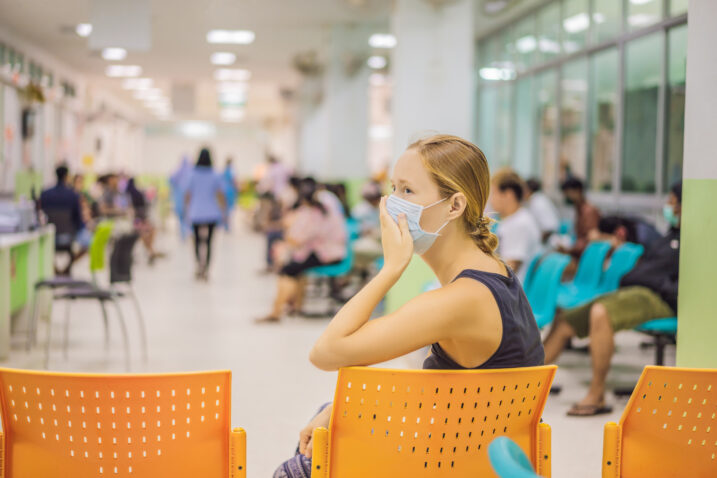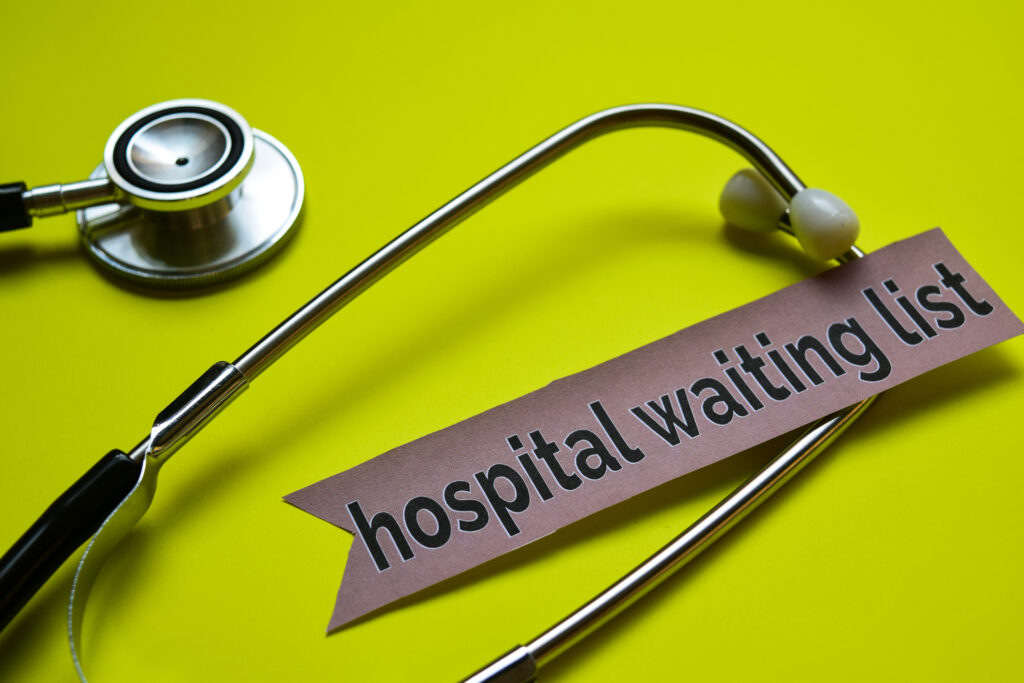It’s time to clear the air on the NHS backlog

The gargantuan scale of the patient backlog has now been exacerbated by Omicron. While staff absences and shortfalls are a much discussed hindrance, there are other issues that play a part in thwarting patient throughput. One such issue is Belüftung – or the lack of it.
Poor Belüftung contributes to the backlog
Ventilation is critical to infection control. Yet structural under-Belüftung has long been a challenge throughout the NHS, mainly due to inadequate existing Belüftung systems in older hospitals and prohibitive retrofit costs and disruption.
When a highly infectious disease paralyses the nation’s health facilities, poor Belüftung has a direct impact in terms of reduced operating capacity (to allow for social distancing) and increased fallow time between treatments (to remove virus particles, especially after Aerosol Generating Procedures).
Air change standards are not widely achievable
Targets for saubere Luft delivery within healthcare are ambitious, and rightly so. The WHO’s latest Belüftung roadmap stipulates 160 L/s/patient or 12 ACH where Aerosol Generating Procedures (AGPs) are performed, with a fallback position of 60 L/s/patient or 6 ACH in other areas such as wards.
Government guidance, set out within a Belüftung addendum to the latest January 2022 infection prevention and control guidance, specifies 10 L/s/person as the lowest common denominator. Even achieving that is a challenge for many NHS buildings. Rather than being an exception, the shortfall in Belüftung levels is the norm. The WHO’s advice to ‘consider reducing the maximum room occupancy to meet the L/s/patient standard‘ puts severe capacity constraints on hospitals and perpetuates the backlog.
Studien of non-epidemic nosocomial infection in hospitals have indicated that 10 to 24% of the infections are spread through the air. Such infections account for 7% in developed and 10% in developing countries, prolonging hospital stays and further contributing to hospital waiting lists.
Post AGP downtime worsens delays
Fallow time is defined as the amount of time an operatory is left empty after an Aerosol Generating Procedure (AGP) to permit the clearance and/or setting of airborne droplets or aerosols. The room must remain empty for a length of time that achieves 99.9% removal of airborne contaminants.
A dental appendix to the January 2022 government guidance provides an update on post AGP downtime. Where there are 10 or more ACH, a baseline post AGP downtime of 15 minutes is recommended. However, that downtime increases to 20 minutes where there are 6 to 9 ACH and to 30 minutes where there are 1 to 5 ACH or where the Belüftung rate is unknown. Poor Belüftung extends fallow time.

Bridging the Belüftung gap
To bridge the Belüftung gap, the WHO states that ‘If no other (short-term) strategy can be adopted, consider using a stand-alone air cleaner with HEPA-Filters.‘ Mobilität air purifiers offer a universally practical infection control measure, such that ‘Total Ventilation = Outside Air Ventilation + Mobilität Air Purification‘. By plugging the saubere Luft gap, room occupancy can be increased, adding patient capacity while mitigating risk.
In a standard 30m3 dentist surgery room (4x3m with normal ceiling height), an air purifier capable of cleaning 560m3 per hour would change the air 18 times an hour (18 ACH). That means a dentist can operate with the minimum 15 minute fallow period, substantially increasing patient throughput.
The SAGE guidelines are clear
The SAGE-Ausschuss’s November 2020 Bericht – Potential application of air cleaning devices and personal decontamination to manage transmission of COVID-19 – recommends air cleaning devices for reducing airborne transmission in poorly ventilated spaces. It endorses subtractive technologies (filtration and direct inactivation) – specifically Faserfilter (HEPA) and germicidal UV (UVC) – which together trap and inactivate the virus, as safe and effective technologies. It should be noted that units must be heavy-duty and hospital grade, with a powerful enough fan to circulate the air and ensure effective cleaning throughout an entire space.
SAGE cautions against additive technologies (based on indirect chemical reaction), which lack proof of efficacy and can cause respiratory issues or skin irritation: these include ionization, plasma and photocatalytic oxidation.
HEPA and UVC – a winning combination
The performance of HEPA-Filterung is well documented. When applied to the current pandemic, it achieves einer Wirksamkeit von 99,99 % when trapping the typical size of Covid particles (circa 0.1 micron) und die typical size that Covid particles are transmitted when enveloped in respiratory fluid droplets (circa 0.5 microns and above).
UVC light at 254nm breaks down the DNA and RNA in viruses and bacteria. The irradiation dose needed for inactivation varies from pathogen to pathogen but, when particles are held in place on a HEPA-Filter and exposed to a constant and high irradiation dose, 100% of them are successfully disinfected.
Mobilität air purification is the practical solution
While poor Belüftung is one root cause of the NHS backlog, it’s an easy fix.
Not only can saubere Luft restore capacity, reduce fallow time and help clear the backlog. There is a sizable energy cost saving in using air purifiers instead of increasing the AHU Belüftung rate or opening windows and cranking up the heating: enough to offset the capital cost of the units over a relatively short period.
It’s time to get to grips with the NHS backlog. Let’s start by clearing the air.
Unverbindliches Angebot anfordern
Teilen Sie uns Ihre Bedürfnisse mit und erhalten Sie innerhalb von 24 Stunden ein Angebot.
Mit Experten sprechen
Buchen Sie ein kostenloses Beratungsgespräch mit einem unserer Experten.
